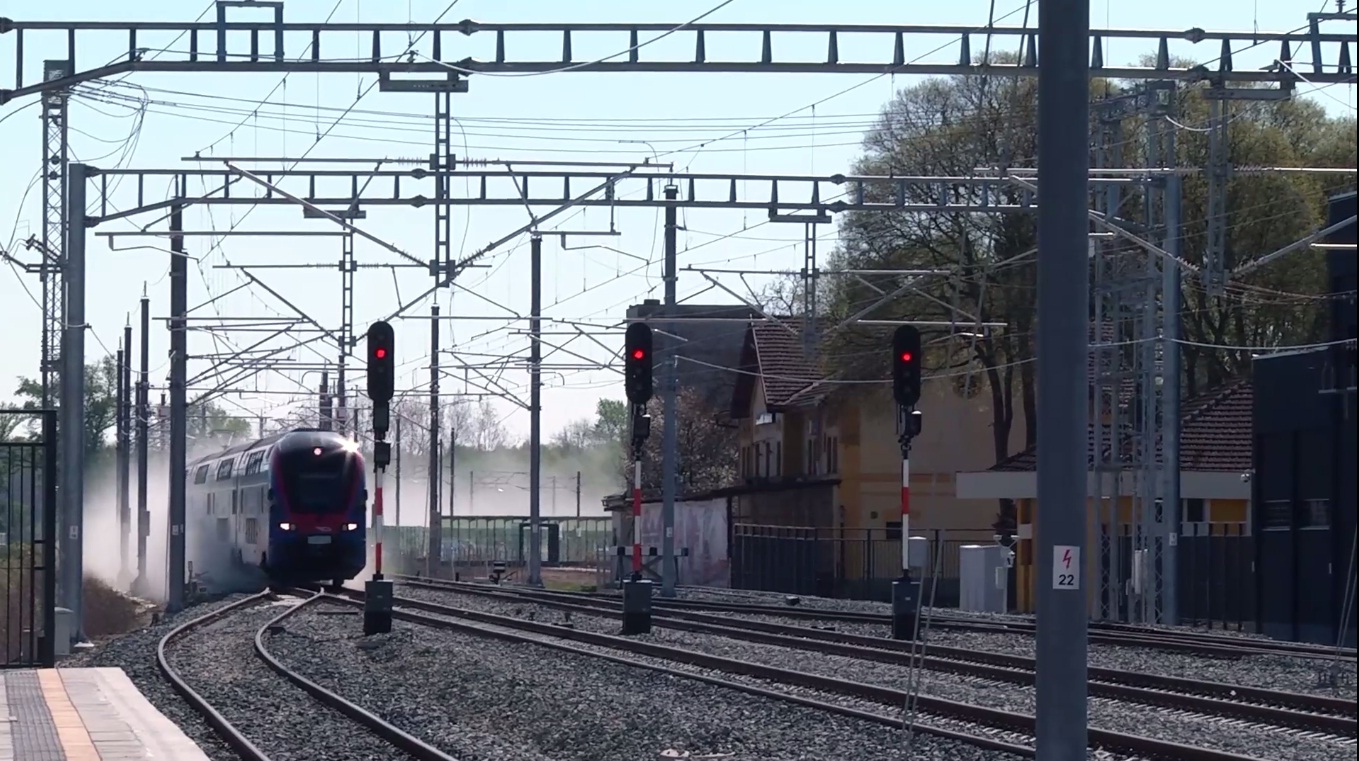 Serbia’s Minister of Construction, Transport and Infrastructure, Goran Vesić, has announced two tenders for the reconstruction and modernisation of two Vojvodina regional rail lines, in northern Serbia.
Serbia’s Minister of Construction, Transport and Infrastructure, Goran Vesić, has announced two tenders for the reconstruction and modernisation of two Vojvodina regional rail lines, in northern Serbia.
One of the tenders includes the Pančevo Glavna – Subotica line split into Pančevo Glavna – Banatsko Miloševo and Banatsko Miloševo – Senta – Subotica sections and the second project covers the Sombor – Vrbas railway.
Bids must be submitted by May 11 for the first tender and on May 12 for the second.
The reconstruction of the railway line Pancevo Glavna – Zrenjanin – Banatsko Milosevo – Senta – Subotica has an estimated value of EUR 96 million.
Works on the 38.5 km Senta – Subotica section started in 2019 performed by ZGOP Novi Sad in a consortium with the CIP Traffic Institute. This section was put into operation in 1889 and was last overhauled in the 1920s, which required reconstruction and modernisation works allowing passenger trains to run at 80 km/h and freight trains with 60 km/h with 22.5 tonnes/axle load. EUR 15.3 million was the value of the contract, which took 240 days to be completed.
The 51 km Sombor – Vrbas line is capable for a maximum axle load of 20 tonnes/axle with a speed limit of almost 40 km/h (on several subsections). The railway line was put into operation in 1906, and the track material was varied from the standard 49E1 type to the non-standard rails. There are 56 level crossings in this section which need to be modernised. When completed, the EUR 20.4 million project will allow trains to run at maximum 100 km/h with a 22.5 tonnes/axle load.
During a working visit to the European Commission in January, the minister asked for European co-financing for the reconstruction and modernisation of five regional lines totalling 600 km, which also include the Vojvodina regional rail lines.
European Union is the largest investor for Serbia’s rail modernisation and development which by now has delivered EUR 800 million, including EUR 598 million for Belgrade – Niš rail modernisation, with a EUR 265 million grant agreement being signed in February. The EC has committed to provide Serbia a grant of EUR 600 million for this important rail line, which is part of a EUR 2.2 billion package to upgrade and modernise the Corridor X on Serbian territory. In addition, in April a second grant agreement was signed with the EIB to support the upgrade of a section along the railway line between Belgrade and Niš.
The modernisation of the regional rail network lines comprises 10 sections crossing several cities including Vrbas, Pančevo, Zrenjanin, Vršac and Novi Sad. In addition, the region also has some discontinued or old rail links which need reconstruction (Odzaci – Crvenka; Sombor – Stapar – Odzaci, Sombor – Riđica, Bač – Bačka Palanka and Senta – Kanjiža).
In addition, a modernised regional railway network is also important for interregional connection with Szeged (Hungary) and Timisoara (Romania).
Vojvodina area has a favourable traffic position given that multimodal European routes cross its territory through the corridors X with the main route, as well as branch Xb, as well as corridor VII. According to city’s strategy, the modernisation and development of its railway infrastructure is essential to shift transport to this sustainable mobility and to strength its position. The rail plans for its area are based on energy efficiency and safety as well as on savings and cutting CO2 emissions. The basic goal is to fulfill European standards related to rail infrastructure and passenger and freight transport services for which trains should be able to run at 160 km/h on the reconstructed rail system. In addition, the existing and planned capacities of railway traffic including the tracks, stations and other facilities, within the city need to be better integrated into the urban planning and environment which will enable a fast and better multimodality for freight and passenger traffic. This also means that the terminals and park and ride facilities need to be integrated.
The introduction of a light rail system has been also analysed as a solution to congestion in central areas of the city and the connection with the neighboring cities and towns. Such an aspect would create transport integration between Novi Sad, Subotica, Pančevo, Zrenjanin, Apatin, Sombor, Sremska Mitrovica and Kikinda.
Share on:



